Resistor Networks
on
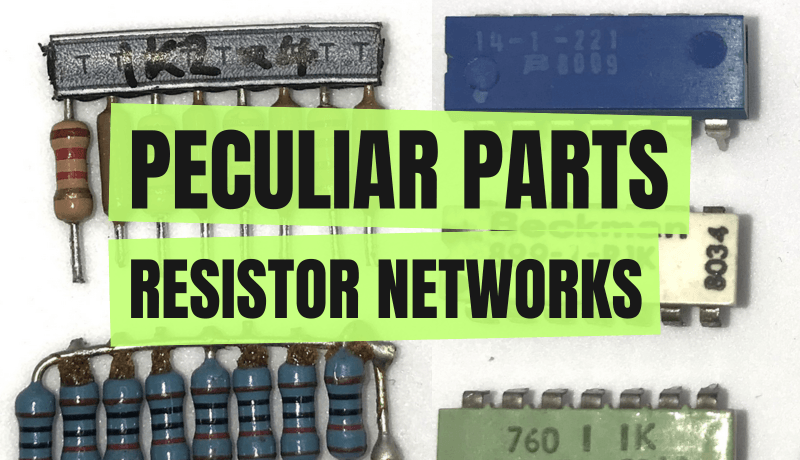
What do you do when you want a number of identical resistors in a limited space? You may want eight for pull-ups on a data bus, or limiting resistors for a seven-segment LED display. In both these cases, one terminal for each resistor should go to a common point. Or, you may want a number of isolated resistors, for example, to set the gains in amplifiers. The answer to your problem is a resistor network, sometimes called a resistor pack or a resistor array.
At its simplest, a resistor network is just a bunch of discrete resistors mounted in a holder for ease of installation onto a printed circuit board (PCB), like those shown in Figure 1. Although I have seen a few of these in older equipment, they are rarely seen these days.
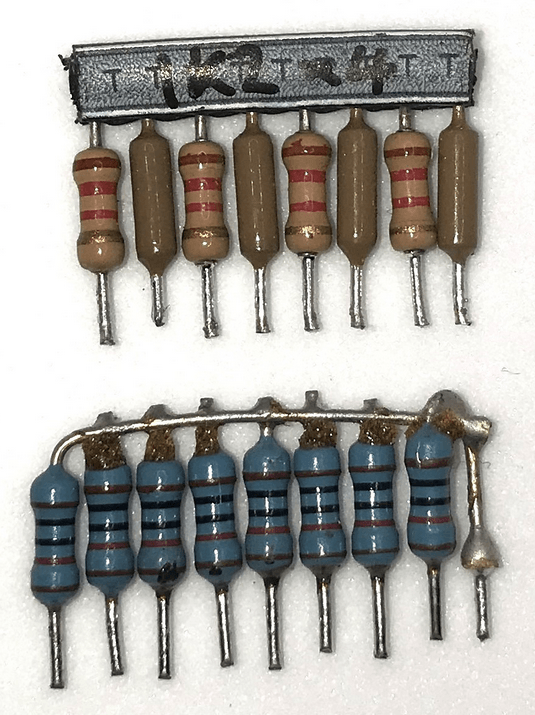
More common is the thick- or thin‑film resistor pack. This is usually SIP (single in-line package) with either one terminal common to all resistors, or isolated resistors each taking two pins. It consists of a ceramic substrate with resistors printed on it, connection pins attached, and the substrate covered in a conformal epoxy coating — a bit peculiar when you first encounter it!
Packages such as this are used extensively on logic and microprocessor boards for pull-ups on data buses. They are often black, but some are very colorful — red, yellow, and blue are commonly-used colors for the coating — and they enliven otherwise dull circuit boards. Figure 2 shows some examples. The usual are 8‑, 9‑, or 10‑pin packages, with either four separate or eight or nine commoned resistors. Packages from four to eight pins also exist, with varying numbers of resistors.
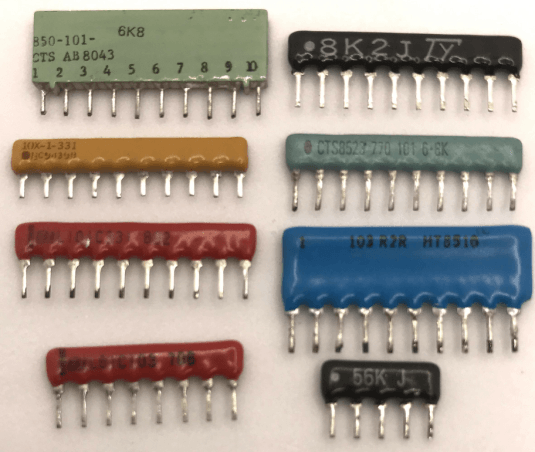
commonly used for data bus pull-ups and available in various colors.
Again, common in older equipment, you will find DIP (dual in-line package) resistor networks. These look more like the usual IC packages, but differently colored — white is common, but other colors are used. Packages other than 16-pin are rare, with eight isolated or 15 commoned resistors being contained in the 16-pin case. SMD types are almost always DIP, with SOIC-type gull wing packages or four isolated resistors. Some DIP types — through hole and SMD — are shown in Figure 3.
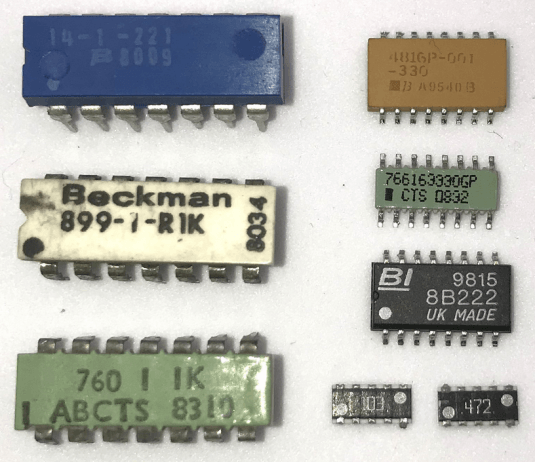
packages and found in both through-hole and surface-mount versions.
There are also more complex resistor networks available. Some have two common points with a voltage divider to each point, used for termination of high-speed data lines. There are also R-2R networks for use in DACs and ADCs. Figure 4 shows some common configurations. One I recovered from a telecommunications PCB had some very strange values when tested, and I still have no idea what it is — probably some custom precision resistors for setting parameters in an amplifier or filter circuit.
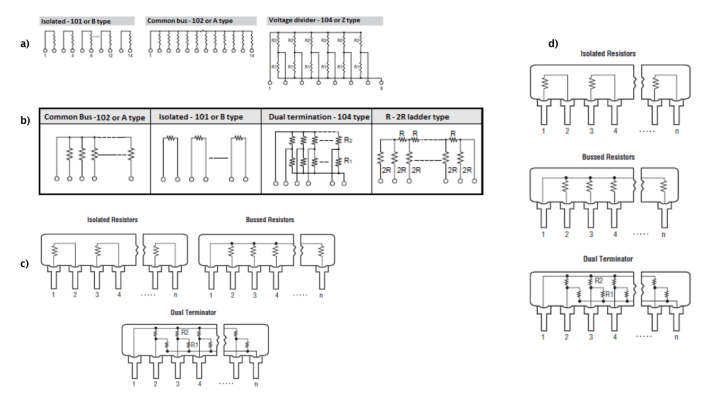
Identifying recovered resistor networks is usually fairly easy — tests with a multimeter will quickly show if you have isolated or commoned resistors. The markings, though sometimes cryptic, may also assist. The resistance value is sometimes shown in 3-digit form, for example, 103 for 1 kΩ, or 220 for 22 Ω. A dot may be used to identify pin 1, which is usually the common point. After the value, there may be a letter indicating the tolerance — J is 5%, G is 2%, and F is 1%. That said, I’ve found most resistor networks show at most a 1% variation between resistors. There may also be an indication of the type of network before the value — A is single common point, B is isolated. Confusingly, some manufacturers use a three-digit code for this — 101 for isolated, 102 for commoned, 104 for two common points on voltage divider networks, and other values for other types. It’s easy to mistake this for the value, so test to make sure. Packages with an odd number of pins are almost always commoned resistors — packages with an even number of pins may be either isolated or commoned types.
So, when you need a bunch of identical resistors, think about resistor networks — they will save you space and pretty up your PCBs!
Editor's note: This article (240300-01) is scheduled to appear in Elektor September/October 2025.
Questions About Resistor Networks?
If you have technical questions about resistors or resistor networks, or if you have comments about this article, feel free to contact the Elektor editorial team by email at editor@elektor.com.







Discussion (0 comments)